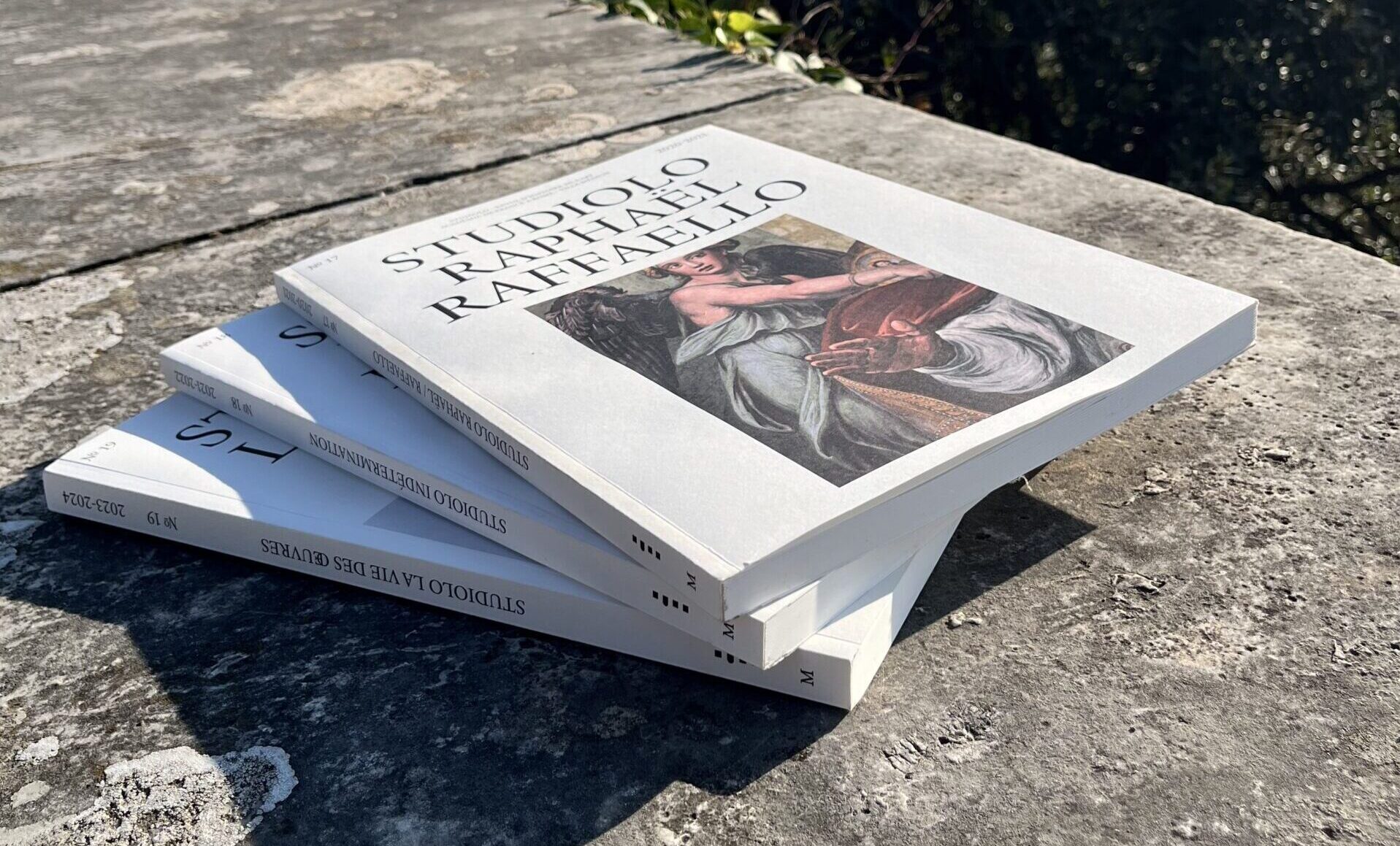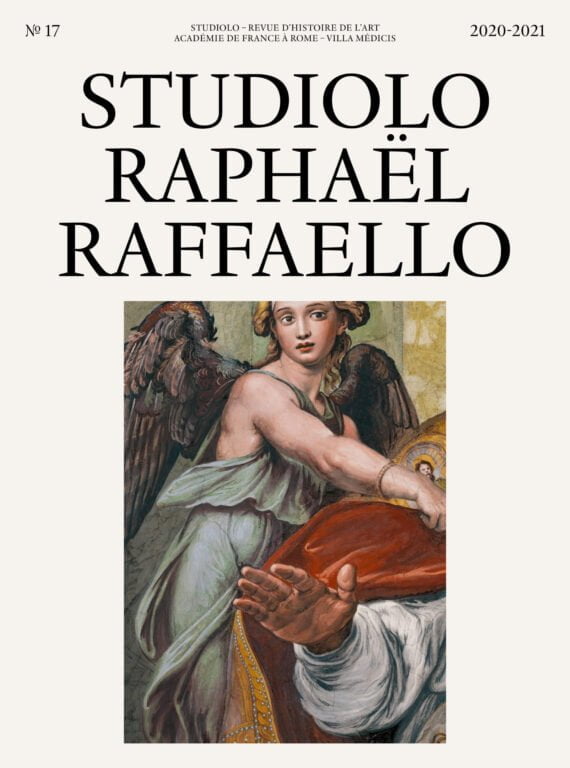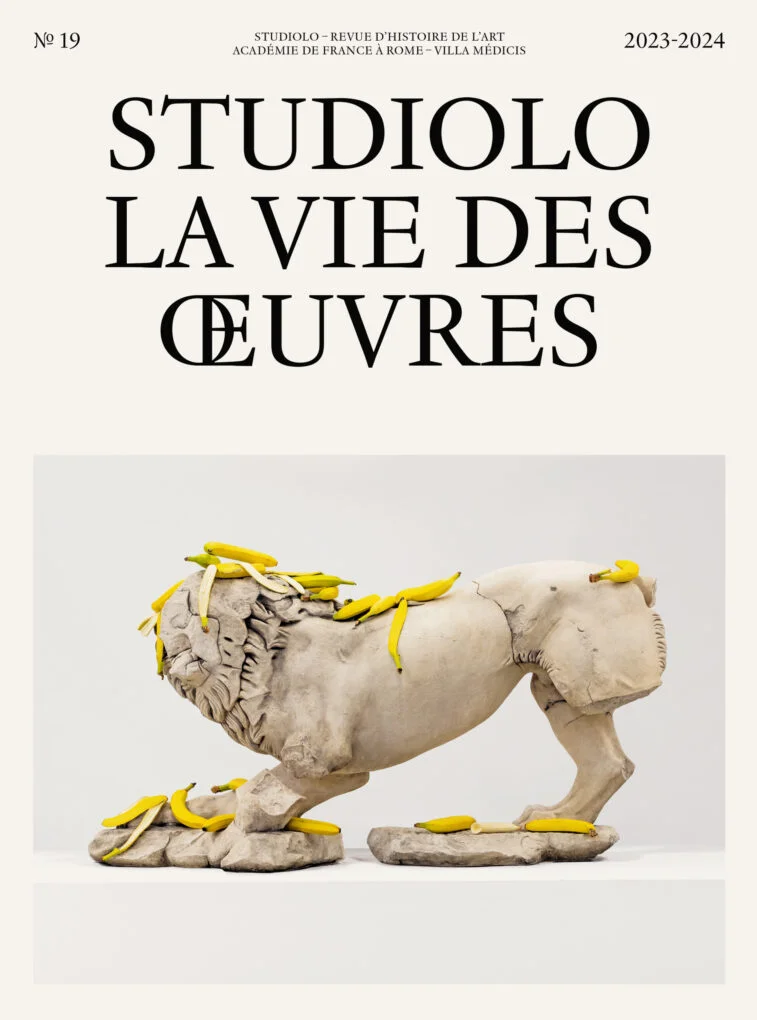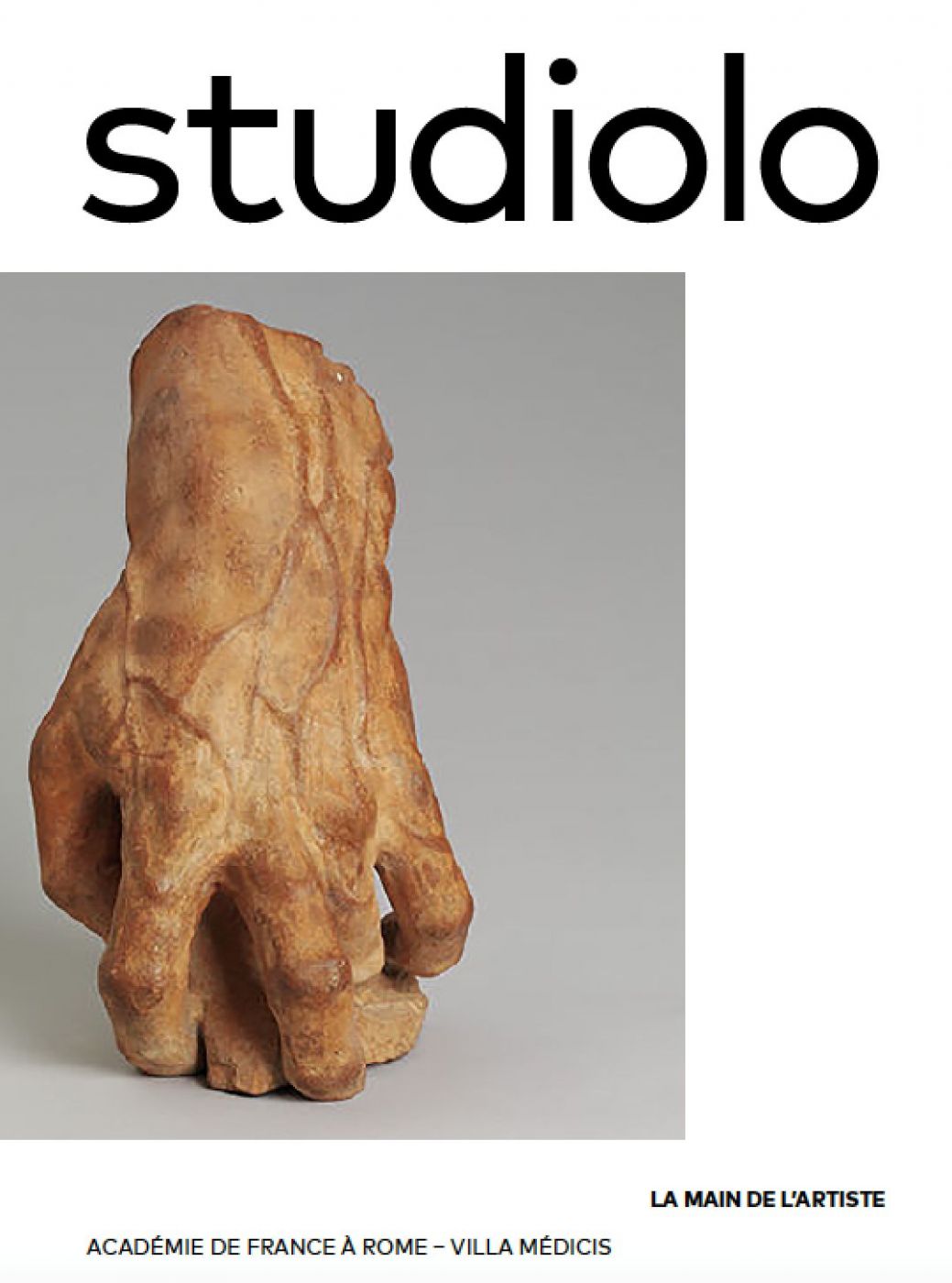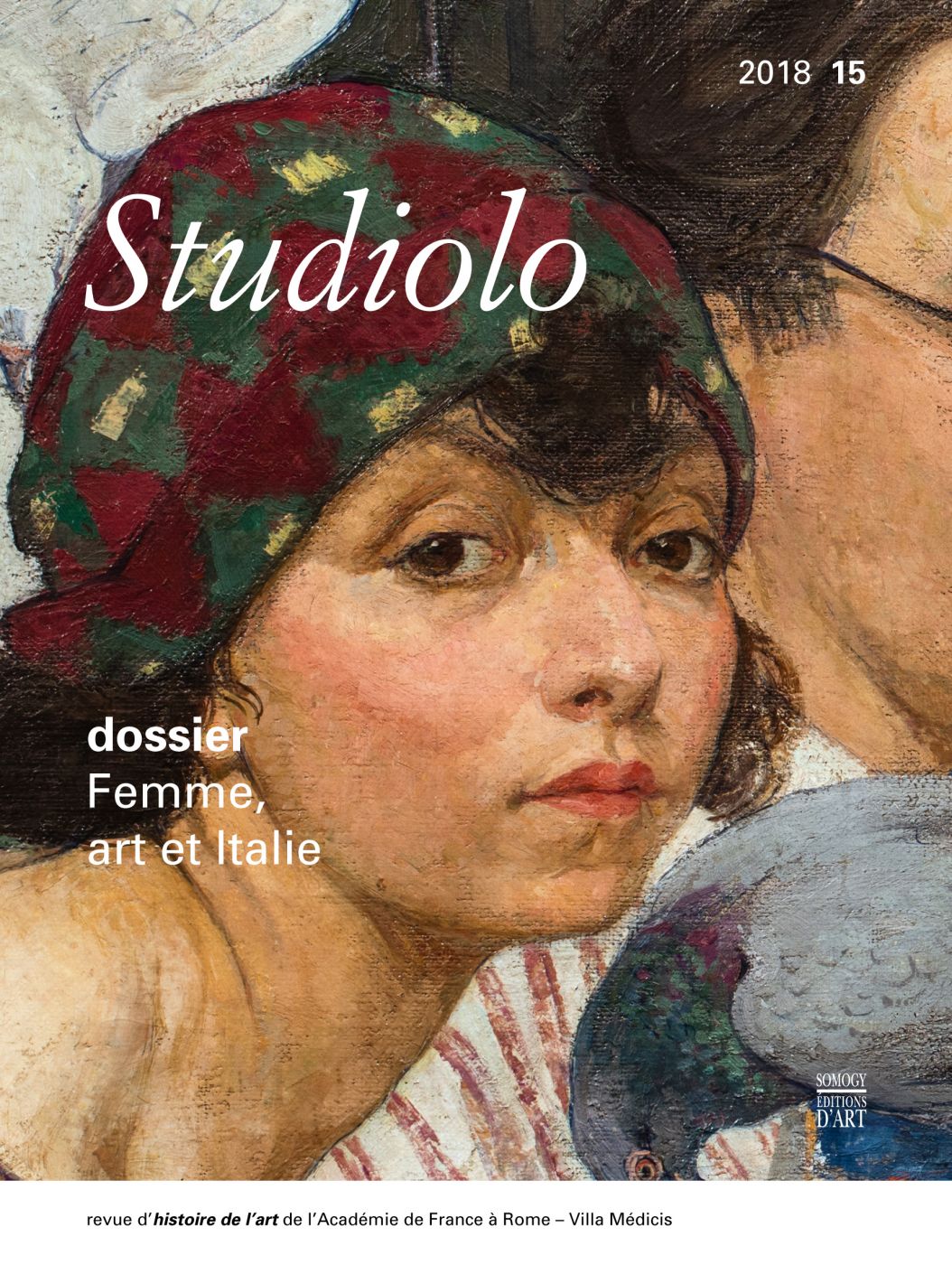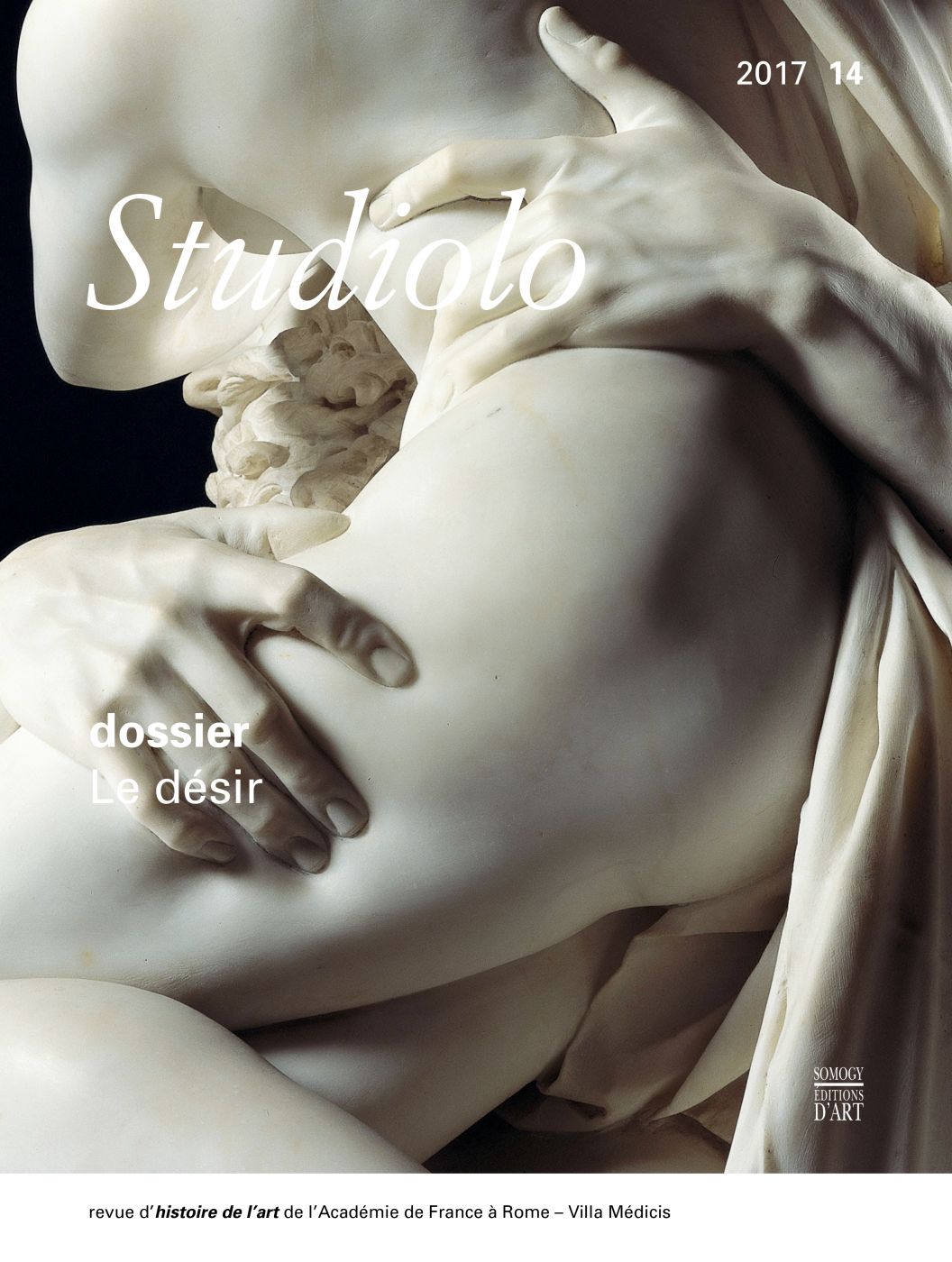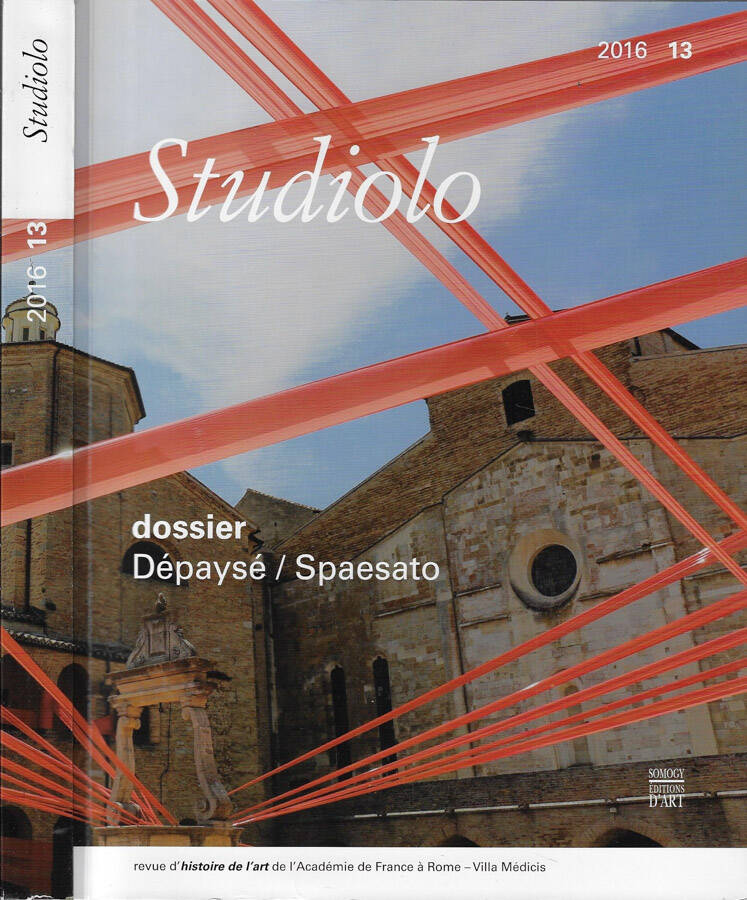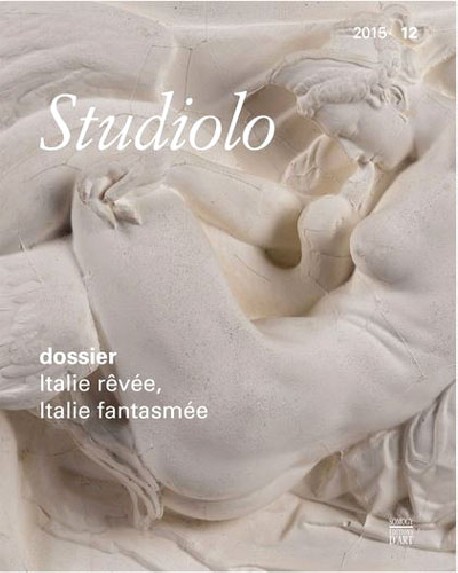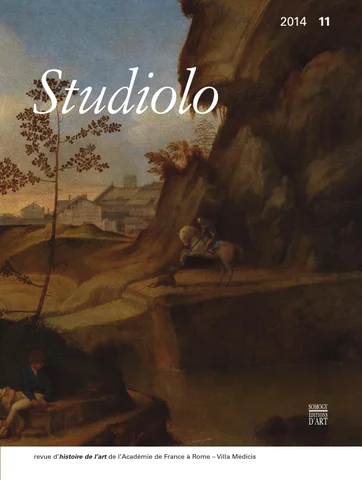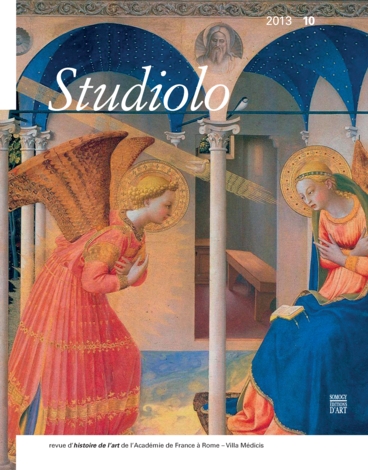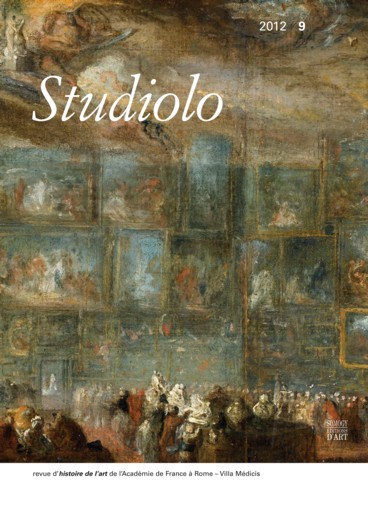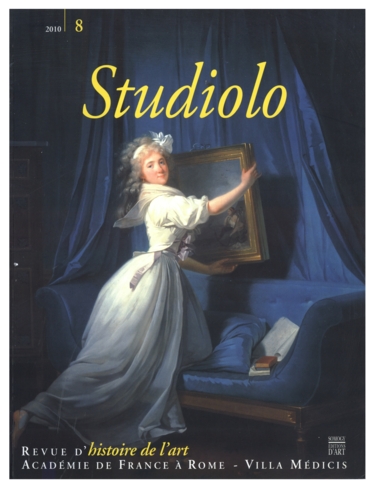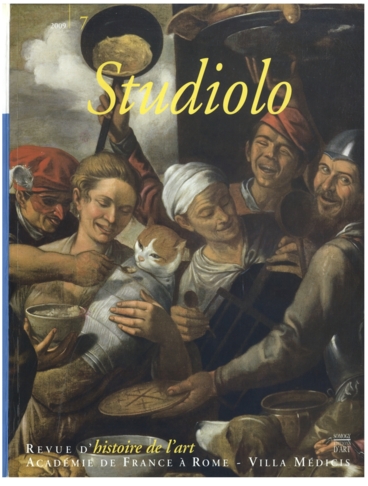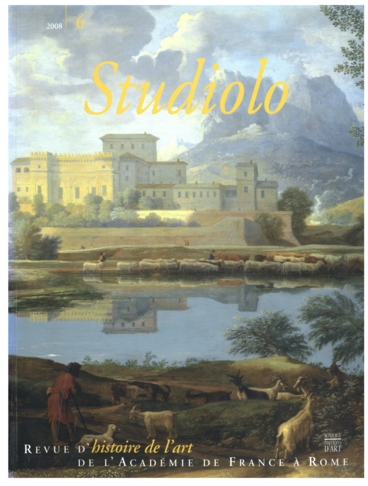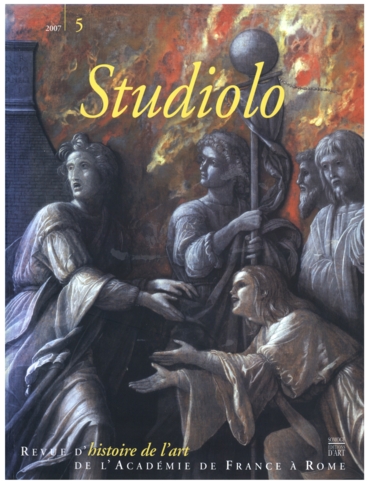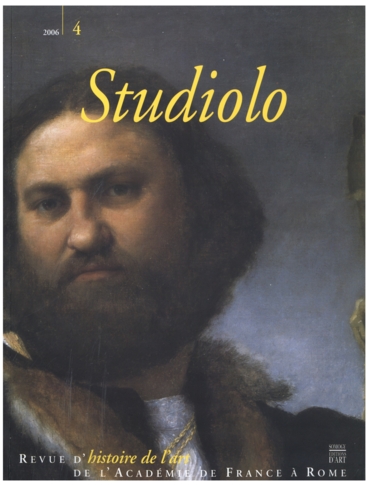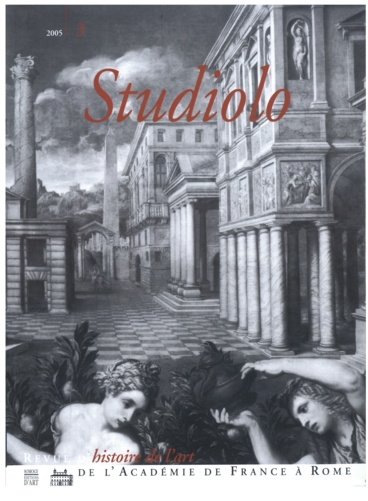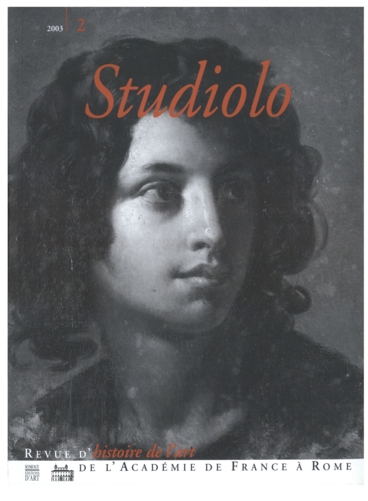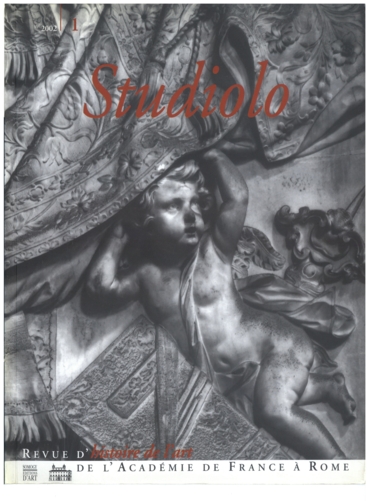Search
Studiolo n°18
Indeterminacy
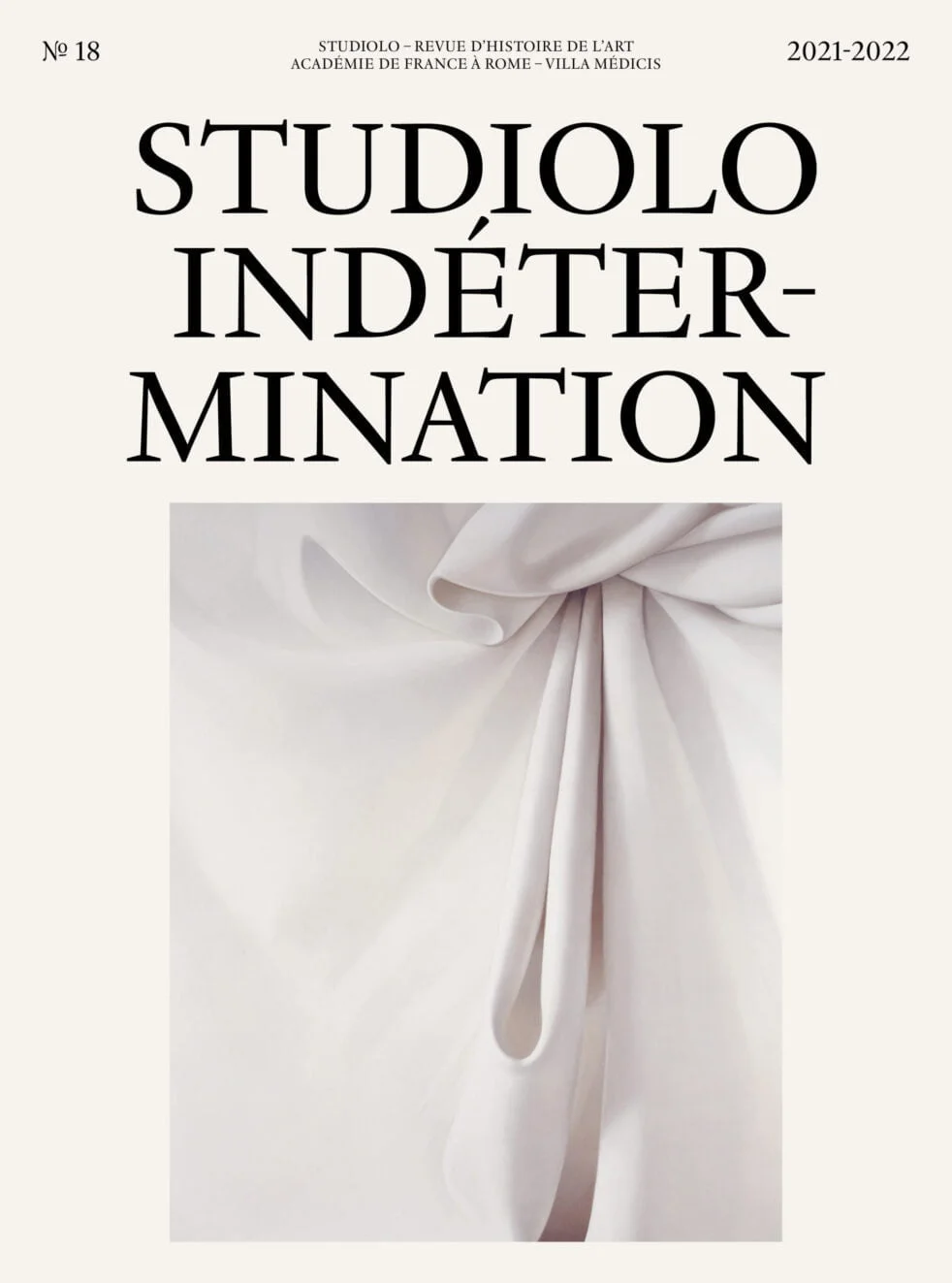
Art history
2023
Prices : 28€
This number is also available for purchase on-site at the Villa's shop.
To order previous volumes, please email: [email protected]
About Studiolo n°18 The challenge posed to art history by indeterminacy is great, whatever approach to images one may adopt, for the task of critical and historical work is that a priori of observing, describing, understanding, classifying, explaining… This is the hallmark of a discipline founded on speech, which seeks to account for the eloquence of the works of art it studies. And yet, there are many phenomena that escape the registers of traditional discursivity, challenging the very act of naming and, with it, the categories that have structured the discipline of art history (Georges Didi-Huberman).
In choosing to (re)think the issue of indeterminacy in issue 18 of Studiolo, we wanted to accompany and broaden a reflection that was at the heart of the preparations for the exhibition Gribouillage / Scarabocchio. De Léonard de Vinci à Cy Twombly organized in 2022 at the Villa Médicis and in 2023 at the Beaux-Arts de Paris. Indeterminacy is at work in various ways in the graphic disorder of doodling. Such a practice, which populates the margins of Renaissance works, appeared unclassifiable, even incomprehensible, in terms of the criteria of judgment and artistic conventions of the time.
It was only in the 20th century, when it finally emerged from the shadows, that it began to echo the ambitions and desire for indeterminacy (of vision, form, content, categories…) of the artistic avant-gardes: “Figurer le rien, figurer du moins ce qui n’a pas de nom, l’indéterminé”, wrote Jean Dubuffet. How can we apprehend a phenomenon when there are no words to describe it, without disowning it, while retaining the element of confusion and perplexity that it imposes? The question of speech is central to the problem of indeterminacy. As Dario Gamboni notes, indeterminacy is often defined negatively “as the state of mind of a person who is unable to make a decision, to determine himself” and as “the character of a thing that is not defined, established, delimited with precision”.
Yet many visual phenomena and expressions are of this order: Leonardo da Vinci couldn’t find the words to describe the elusive, unspeakable qualities of the nature he sought to paint (Elena Paroli); art critics have often been dismayed by the descriptive inability of most languages to express the most sensitive aspects of art, and to reduce subjective experience to an objective datum (Guillaume Cassegrain). Creation is an encounter with the indeterminate: with the infinite and limitless possibilities contained in matter itself (Baptiste Tochon-Danguy). Lack of determination is then transformed into potential, into a force that artists can seize upon, for example, in the non finito as an aesthetic quality, or to forge new visual poetics, which further stimulate perception by their ambiguity running counter to the rhetorical clarity and legibility of academic works (Olivier Schuwer). But to what extent is such a use of indeterminacy compatible with the notion itself, with the “defect” of determination? A philosophical and conceptual excursus, in the Debate section, puts indeterminacy to the test of logical analysis in order to highlight the alleged relativity of this notion, both from the point of view of artistic praxis and its reception (Michele Di Monte).
Strangely enough, it’s often the desire not to give in to indeterminacy that stimulates art historians’ most advanced “readings” of ancient works. Such is the case with a new analysis of the Martyrdom of St. Lawrence fresco painted by Bronzino in the church of San Lorenzo in Florence for Cosimo I de’ Medici. Is everything in this work determined by the will of the artist and his patron (Patricia Rubin)?
A thematic issue cannot, of course, capture the variety of approaches inspired by a notion as rich as indeterminacy. It is, however, an opportunity to rethink the role of criticism and the historical discipline in the face of the dissonance at work in the productions studied, leaving the door open to other forms of knowledge. Taking into account the indeterminacy of the work, its resistance to being fully grasped and appreciated, even beyond its author’s will – also means recognizing the autonomy of art and the infinite variety of encounters it can provoke with different subjectivities. In other words, it means reconsidering the infallibility of the supposed objectivity of analysis and critical detachment. But it also means being cautious about hermeneutic activity and its capacity to exhaust all possible facets of the work. The way we look at art objects changes, and their living depth is measured over time.
Thus, in the Villa Medici, History and Heritage section, two articles offer studies from different, but by no means contradictory, perspectives on the Tenture des Indes, which has been the subject of much discussion in recent years, catalyzing a wide range of positions, interpretations and reactions (Cécile Fromont, Gerlinde Klatte). Here again, we’re faced with the power of art, the power of images, whose motives are far from clear-cut. Studiolo’s role is to welcome these complex, intersecting viewpoints, capable of calling them into question, of enlightening without freezing, and of nurturing debates with all the methodological approaches and viewpoints intellectually grounded in research.
232 pages - 160 color ill. - 13 ill. b&w
23 x 31 cm
ISBN 978-2-86589-140-5
ISSN 1635-0871
Summary
5 EDITORIAL
Francesca Alberti, Sam StourdzéDOSSIER
INDETERMINACY10 “RUNNING DOG. THE CRUMPLED, THE UNDETERMINED”
Guillaume Cassegrain18 PAINTING SCIENCE AS A FORM OF UNDETERMINATION. THE “UNDEFINED” IN THE LEXICON AND SYNTAX OF LEONARDO DA VINCI
Elena Paroli26 DANGEROUS LIAISONS: COMPROMISING POSITIONS AND PROVOCATIVE ALLUSIONS IN BRONZINO’S MARTYRDOM OF ST. LAWRENCE
Patricia Rubin50 MONET AND REDON THROUGH THE LENS OF MALLARMÉ
Olivier Schuwer68 FUROR AND NON-FINITO: THE AESTHETICS OF THE UNDETERMINED IN DONATELLO, FICINO, MICHELANGELO, AND VASARI
Baptiste Tochon-DanguyVARIA
92 THE BRAGUETTE: FASHION AND MORALITY IN 16TH CENTURY COURT EUROPE
Gaylord Brouhot114 “ALWAYS FEARING AT ALL TIMES PLAGUE.” PLAGUE AND STORM IN SAINT ROCH AND THE DONOR OF PARMESAN
Florence LarcherDEBATES
136 THE SENNA OF POPPEA OR THE ANTITHESIS OF THE VEIL
Michele Di MonteFREE SPACE
154 WHAT ONE WANTS TO SEE
Coralie Barbe162 MIGUEL, MICHEL, AND ME…
Adila Bennedjaï-Zou170 EVERYTHING I HAVE SEEN
Anne-James Chaton174 LIVING STONE
Clément PérisséVILLA MÉDICIS
HISTORY AND HERITAGE182 KONGO, BRAZIL, FRANCE, AND THE COLONIES: THE ISSUES OF THE VISIBLE AND THE INVISIBLE IN THE TAPESTRY OF THE INDIES AT VILLA MÉDICIS
Cécile Fromont204 INTERVIEW ABOUT THE TAPESTRY OF THE INDIES WITH GERLINDE KLATTE BY FRANCESCA ALBERTI
218 NEWS FROM THE DEPARTMENT OF ART HISTORY
224 SUMMARIES AND BIOGRAPHIES
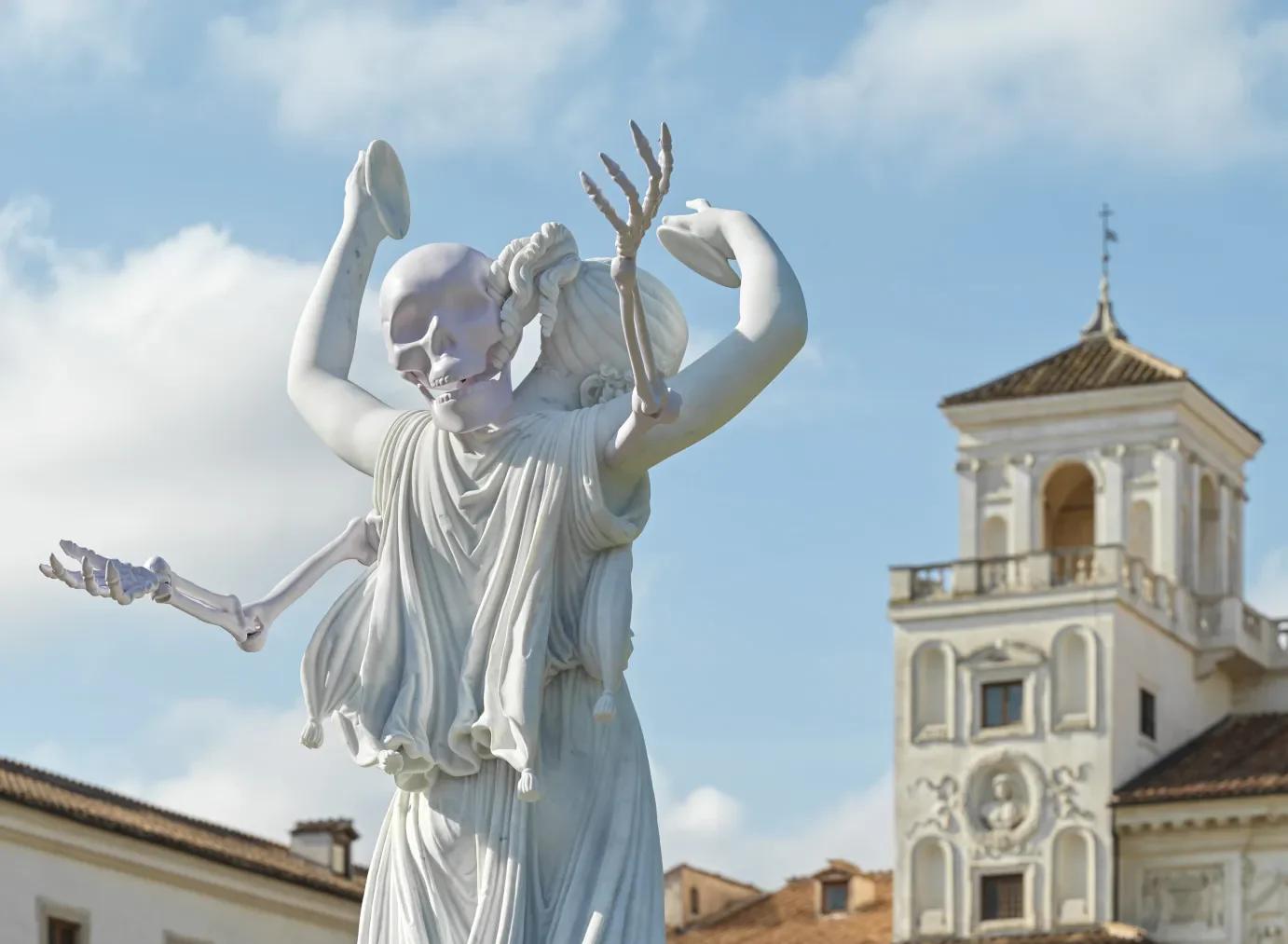
Dance
Urs Fischer
18.09 - 22.11.2025
- Artist :
- Urs Fischer
